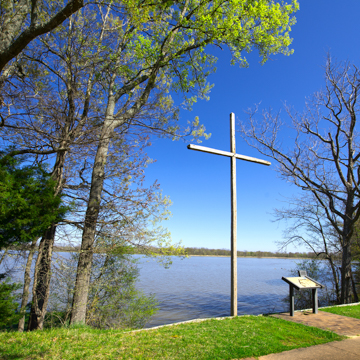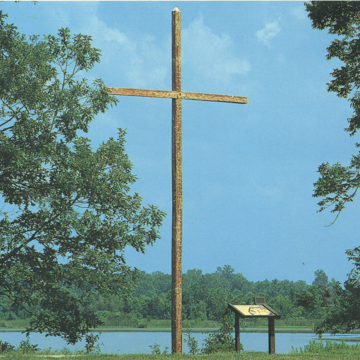The Arkansas Post was the first European settlement in the lower Mississippi River valley. From 1682 to 1720 Henri de Tonti operated a trading post here, which was near the Quapaw Indian village of Osotouy. There is nothing left of the forty to fifty buildings and the three forts that successively served the French in 1752, the Spanish in 1771, the French again in 1800, and, finally, the Americans in 1803 after the United States acquired the area as part of the Louisiana Purchase. The Arkansas Post became the seat of government for Arkansas County in 1813 and was chosen as the capital of the Arkansas Territory in 1819. In the Civil War, the Confederate army built the earthen Fort Hindman in 1862 for a major battle in 1863. The fort and the remaining French and Spanish houses were destroyed, the final demise of the Arkansas Post settlement.
At that time, this southernmost tip of the Grand Prairie stood high above the Arkansas River, and its tall bluffs promised protection from floods. That land now lies low: flooding, erosion, and natural river changes have placed many of the historic resources underwater. Yet, the place holds enough national significance that the National Park Service took it over from Arkansas State Parks in 1960, and it is now a National Historic Landmark. The park includes a visitor center, museum, and log dogtrot house of 1877.
















